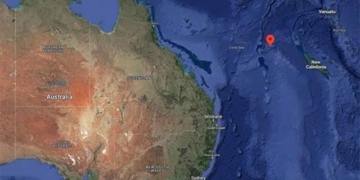The Mughal Emerald is considered the largest carved emerald in the world, featuring engravings on both sides, valued at $2.2 million.
Gemstones have been symbols of status and wealth for thousands of years. Typically, the larger the gemstone, the more valuable it is. Regarding emeralds, very few exceed the size or value of the Mughal Emerald. Regarded as the largest carved emerald globally, it is worth up to $2.2 million and has existed since 1695, according to a report by Ancient Origins on December 10.

The Mughal Emerald is an impressive example of ancient gemstone carving art in India. (Photo: Museum of Islamic Art)
The Mughal Emerald was carved during the reign of the last of the four great Mughal emperors of India, Aurangzeb (who ruled from 1658 to 1707). It is the only carved emerald from the classical Mughal period documented to date. For this reason, it has become a standard for dating all other carved emeralds from India.
The only known significant and high-quality emerald source during this period was in Colombia. Other ancient sources of emeralds, such as those from Egypt, Austria, and Pakistan, were depleted. When European conquerors arrived in South America and discovered the natural emerald sources in Colombia in 1537, they began to extract and transport this precious stone back to Europe.
Through trade, emeralds were sent to one of the three great Islamic empires of the time: the Ottoman Empire (1299-1923), the Safavid Persian Empire (1501-1722), and the Mughal Empire (1556-1707). The demand for emeralds in these empires was immense, especially among the ruling class. It is likely that this was also the route through which the Mughal Emerald reached India.
Upon arriving in India, the gemstone was entrusted to a skilled engraver. The craftsman deftly carved Shi’ite Islamic prayers onto the surface of the stone. This indicates that Emperor Aurangzeb was not the one who commissioned it, as all Mughal emperors were Sunni Muslims.
The famous emerald may have belonged to a Shi’ite commander from a Persian empire, or one of the Deccan kingdoms that Aurangzeb conquered. However, the exact ownership remains a mystery.
The Mughal Emerald not only symbolizes the Mughal Empire but also represents the pinnacle of cultural and artistic achievements attained in India. The gemstone measures 5.2 cm x 4 cm x 4 cm and weighs 217.80 carats, equivalent to about 43.56 grams. It is cut in a rectangular shape with a flat surface, one side engraved with Islamic verses, while the other side is intricately adorned with delicate floral designs.
The Mughal Emerald was owned by Alan Caplan, an American geological and mineralogical researcher, until his passing in 1998. In 2001, his heirs sold the gemstone. An anonymous buyer purchased it for a record price of $2.2 million at auction. Today, it is displayed at the Museum of Islamic Art in Doha, Qatar.


















































